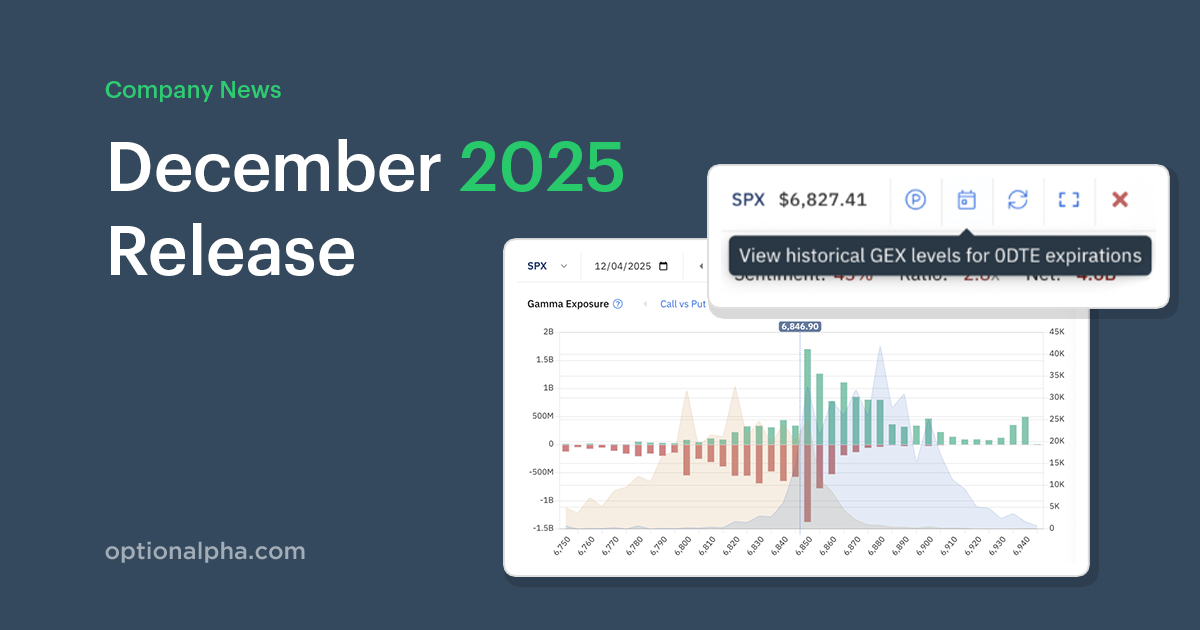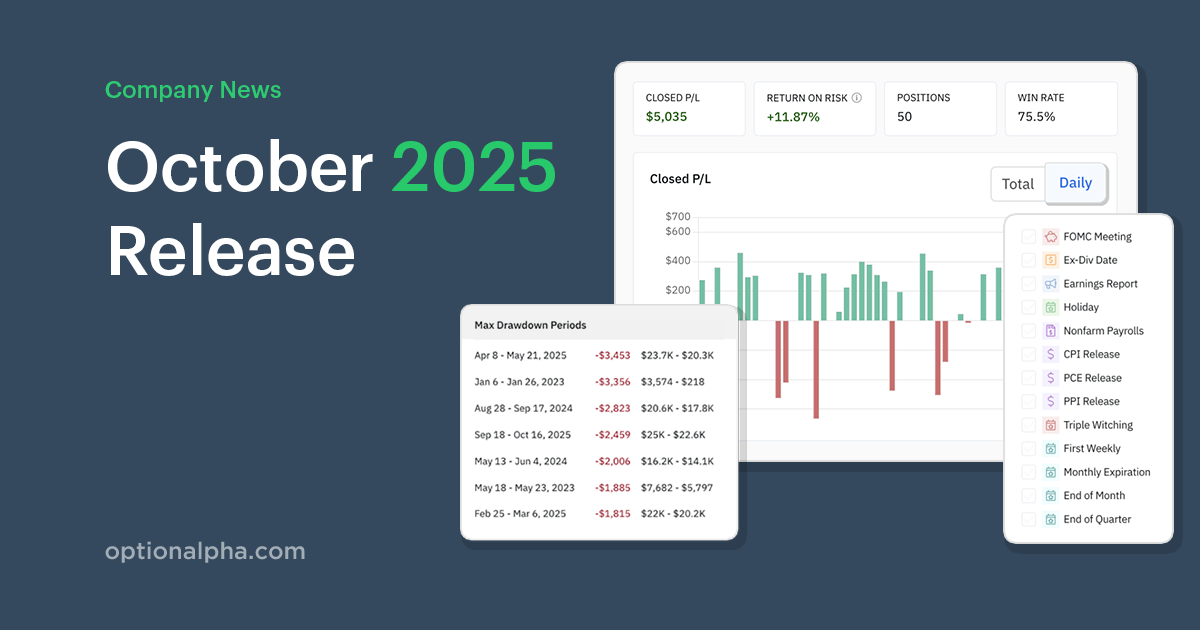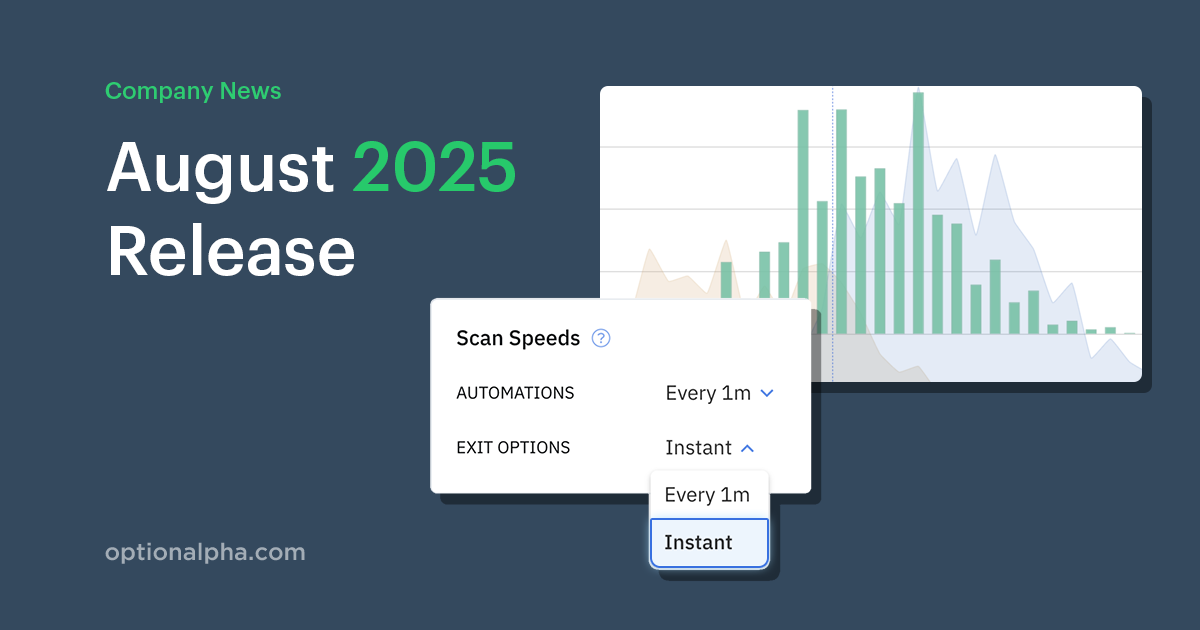Most options traders think they understand how option prices move. In reality, they don't have the complete picture. Not really, anyway.
First, we’ll define the key terms and then dive into the explanation and application of the case study.
What is the Bid-Ask Spread?
The bid-ask spread is the price difference between the bid price and the ask price for a security. The bid price is the price a buyer is willing to pay for a security, and the ask is the price a seller is willing to sell a security.
How Do You Calculate the Bid-Ask Spread?
In an options price quote, the highest bid price and the lowest ask price are displayed for a security. The bid-ask spread is the difference between those two prices. If the bid is $1.00 and the ask is $1.10, the spread is $0.10.
The bid-ask spread decreases, or tightens, when increased trading volume helps create liquidity. The bid-ask spread increases, or widens, with lower volume securities.
Tight bid-ask spreads are a hallmark of highly liquid, efficiently priced markets.
The midpoint, also known as the mark price, is sometimes also displayed. The midpoint is the price exactly between the bid and ask.
What Affects the Bid-Ask Spread?
Sure, options Greeks affect prices. So does overall market volatility. An option’s extrinsic value naturally tends toward zero, and we can package up this idea in a neat, monotonically decreasing graph representing price decay. But there are other forces at play here if we peek behind the veil.
Many users have recently wondered why a profit/loss decision followed the "Yes" path, for seemingly unknown reasons, and closed a position. The user will cite the usual suspects: no big price movements at that time in the underlying, spread prices look good in their brokerage platform, so what happened?
“Well, the spread widened,” we tell them, which admittedly seems like a non-answer. To dig deeper, we're going to investigate what that means.
TLT Case Study
Let's look at a case study. On Friday, 21 May 2021, I recorded every live market update tick for the fairly liquid and popular bond ETF, TLT. Data recording ranges from just after 9:45 to the market close at 16:00 ET. TLT’s price movement on the day was relatively muted, trading in a $0.64 range compared to its average true range (ATR) of $1.96.

After the market closed, I randomly selected the 4 Jun 21 expiration (a weekly expiration). TLT closed on the day at $137.67, so I decided to construct a narrow iron condor around the underlying spot price. I selected short calls and puts 2 strikes out of the money, and the long calls and puts 2 strikes above and below that, respectively. I then graphed each strike's price movement to see what happened on the day.
The five figures below describe the bid price and ask price at any given moment after 9:45 this morning. The horizontal scale is deceptive; three of the four graphs below have over 8,000 data points. The net bid-ask spread chart (Figure 5) represents more than 31,000 price quotes during the day.





Notice anything strange? There was a large widening of all spreads just after 9:45, but let's ignore that for a minute. The short call, long call, and long put bid/ask spreads all move seemingly in lockstep during the day. The short put option, however, is an entirely different story.
The short put’s price is all over the place. It's being bid up and down all day with spreads widening and collapsing in one or both directions again and again. So what's going on? I'll be honest with you: I have no idea. Someone out there, market maker or otherwise, was all over this 4 Jun 21 $137 put strike. And, forget about the whole "volume and open interest" argument - more $141 strike call contracts changed hands today than the $137 puts (volume of 223 vs. 182, respectively).
The key takeaway here is that the bid/ask spread of one contract in this iron condor position is moving erratically. The truth is, if you are holding a position with this $137 put contract, the bot decision logic may also seem erratic (e.g., trying to close a position for a potential profit when a moment ago it was in loss territory), negatively affecting any attempt to mark the bid-ask of the entire position.
Conclusion
As a manual, click trader, this is happening so fast you can't even see it, let alone do anything about it. As a bot trader, you will have the tools to defend yourself against these market forces. In its complete form, SmartPricing will refuse to open positions with unfavorable spread widths, only walking the "best parts" of the spread. What if the spread widens? If you’re only trying to open or close a position at the most favorable price, does that matter to you? In the upcoming Formulas recipe, SmartPricing will provide the ability to look at bid-ask values of individual legs and compare them. This case study is why we've spent so much time making sure we get pricing right.

.png)



.png)









